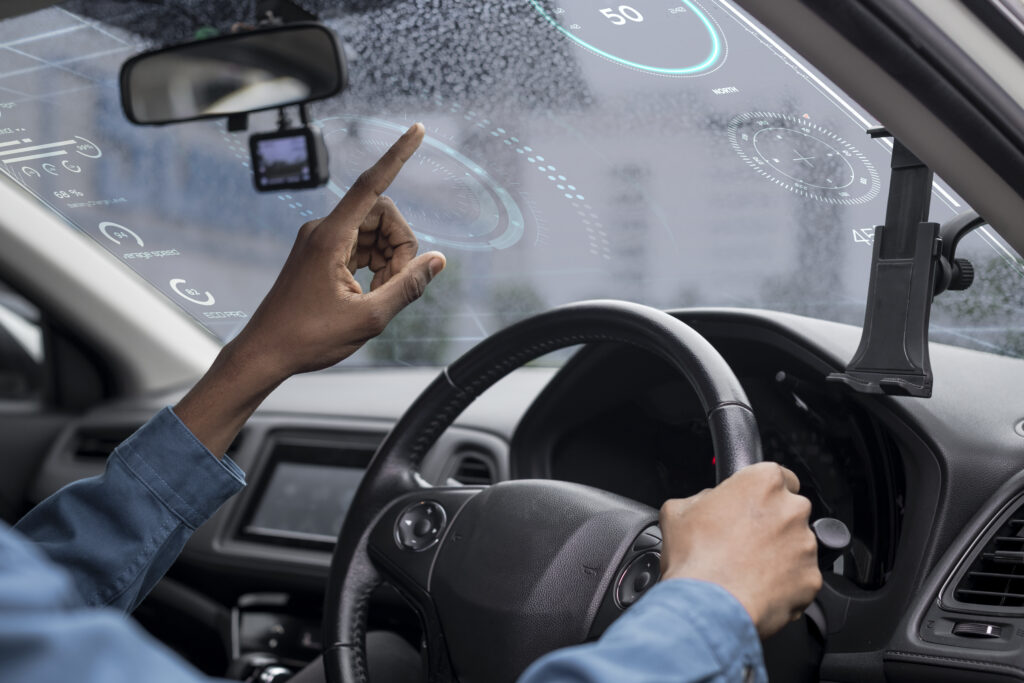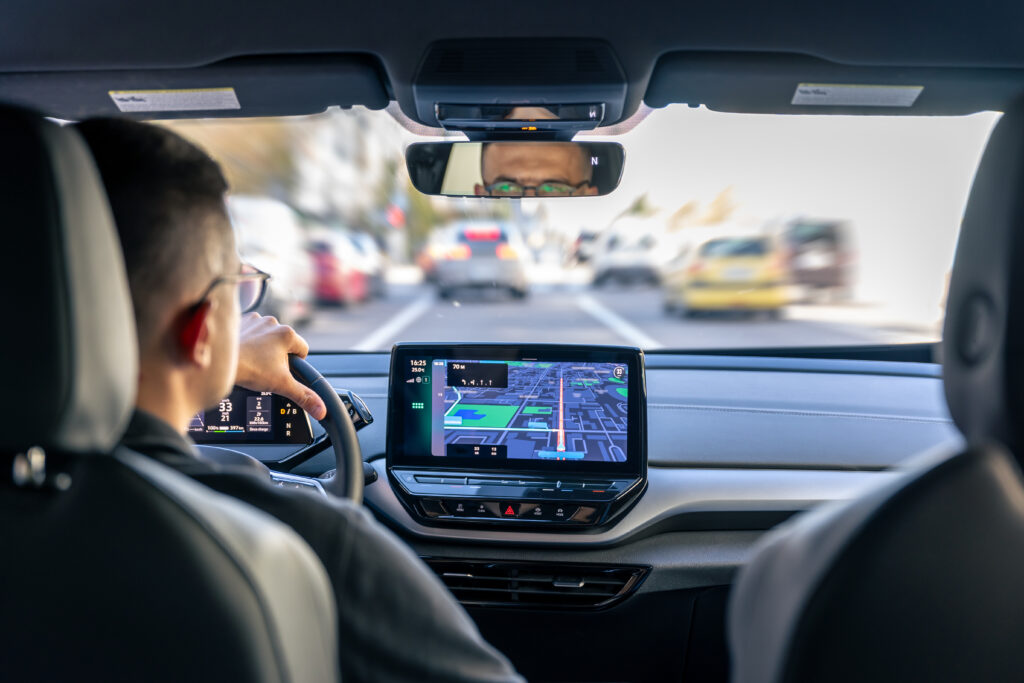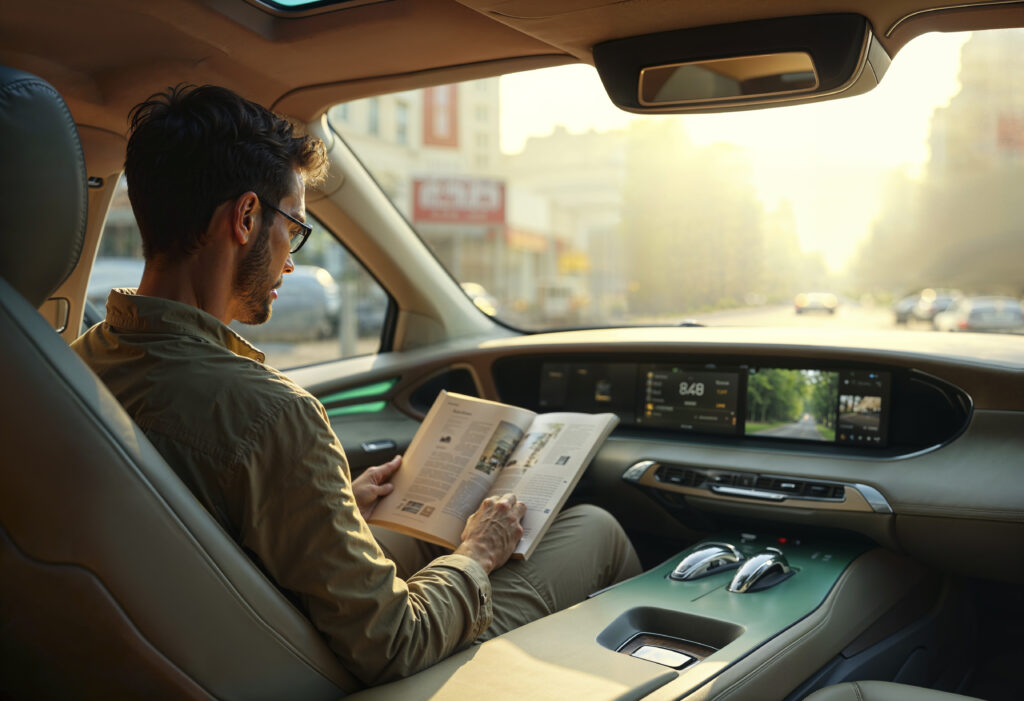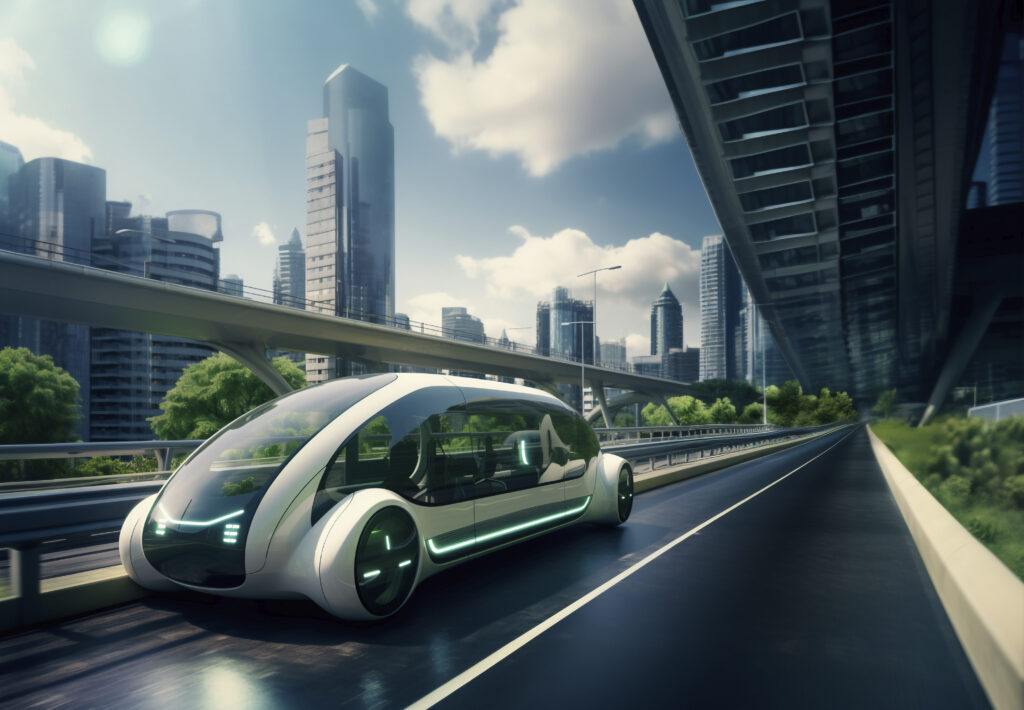🚗 Core Technologies & Architecture
- Sensor Fusion
AVs integrate LiDAR, radar, cameras, and ultrasonic sensors to construct accurate real-time maps of the environment. LiDAR now provides small, low-cost, and highly accurate 3D spatial information; radar and cameras provide object detection even in bad weather. - AI & Machine Learning
Sophisticated neural networks don’t just detect obstacles—they forecast pedestrian action, lane changes, and traffic patterns in milliseconds through deep learning algorithms and probabilistic risk analysis . - V2X Communication
Vehicle-to-everything (V2X) allows AVs to communicate with infrastructure, other cars, and even pedestrians through 5G-capable data links. A secure stream evades traffic congestion, enhances warning latency, and enhances safety in cities .
🧪 Major Players & Deployments
- Waymo (Alphabet)
An industry pioneer in robotaxis, having ridden in Phoenix, SF, LA, Austin, and Atlanta, with more than 10 million paid trips. Their fares are ~$5 higher than Uber’s, yet have a 93% decrease in pedestrian crash injuries over human drivers. - Tesla & Cybercab
Tesla started its “robotaxi” testing in Austin with its camera-only Full Self‑Driving (FSD) and reports independently mention initial problems such as uncanny driving and traffic infractions. Tesla is planning to start mass-producing its innovative Cybercab (no pedals/wheel) before 2027. - Baidu Apollo & Apolong
China’s Baidu’s Apollo Go robotaxis now run driverless in urban areas such as Wuhan and Chongqing. Their Apolong buses are Level 4 driverless buses employed in Beijing since 2017 . - May Mobility
Provides fully autonomous shuttles for retirement communities and pilot deployments in Arizona, Michigan, and Georgia . - Mercedes‑Benz DRIVE PILOT
A Level 3 hands‑free system approved in Germany and certain U.S. states, employing NVIDIA-supported software for conditional automation.

⚙️ Business Models & Market Trends
- Robotaxis & Ride-Hailing Services
Waymo, Baidu, Tesla, Cruise, Uber/Wayve, and Zoox are in active deployment or pilots. Waymo and Baidu are already offering rides, while Uber’s CEO opines mainstream deployment is years away . - Subscription-Based Autonomy
OEMs are charging for ADAS and autonomy features (e.g., Ford BlueCruise, Mercedes DRIVE PILOT, GM Super Cruise) as subscriptions, from free trials to $50–$2,500/year . - Autonomous Delivery & Logistics
AVs are transforming shipping: Nuro delivery pods, FedEx tests, and autonomous trucks optimize last- and middle-mile logistics.
🛡️ Challenges & Barriers
- High Adoption Cost
Sensor arrays and compute modules can add $5,000+ per vehicle; fleet scale-up and infrastructure contribute to costs . - Safety, Trust & Ethics
In spite of advancements in AI risk detection, ~13% of U.S. drivers have full faith in autonomous vehicles. Ethical guidelines for split-second decision-making and liability are paramount. - Regulations & Legal Frameworks
Regulations differ drastically by nation and even state. China is leading the development of Level 3 validation, with the U.S. and EU still developing AV-specific safety and certainty legislation. - Cybersecurity & Data Privacy
With AVs extensively networked, the vulnerabilities are a top priority. Contemporary standards such as China’s GB 44495/GB/T 45181 require anomaly detection, encryption, and secure communications. - Infrastructure Readiness
AVs flourish with 5G, intelligent traffic systems, and reserved lanes. Although several cities test such systems, wider deployment is slow.

🔧 Advanced AI & Perception Systems
- Large Language Models (LLMs) in AV stacks
Research (such as ALN‑P3) is incorporating LLMs into perception, prediction, and planning pipelines, allowing for more unified context-aware driving actions without overhead at inference time . - Cooperative Perception via V2X
Vehicle-to-everything (V2X) systems allow AVs to exchange sensor information, extending situational awareness—even around corners. Upcoming research addresses data fusion, latency, privacy, and coordination among heterogeneous systems . - Mapless Vision-based Navigation
Firms such as Imagry provide camera-only, HD-map-free solutions with deep CNNs—flexible and lower-cost, but they require high vision performance .
🛡️ Cybersecurity & Data Protection
- Real-time AI Defense Systems
AVs become ever more similar to mobile data centers. AI actively scans internal networks (such as CAN) for anomalies, quarantining infected components and issuing alerts . - Regulatory Standards & Real-World Threats
Standards such as ISO/SAE 21434 and UNECE R‑155 are being implemented worldwide. High-profile hacks (e.g., Nissan Leaf exploit, Tesla keyless relay attacks, 2025 Pwn2Own) demonstrate the increasing risk and necessity for AI-powered defenses.
🧩 Traffic Integration & Infrastructure
- Connected Vehicles Smart Signals
Platforms such as Henry Liu’s OSaaS dynamically optimize traffic light timing based on feedback from real-time vehicle streams—a precursor to efficient AV operation and intelligent cities. - Data, 5G & Blockchain in V2X
Low-latency V2X communication is based on 5G networks for safety-critical applications. Blockchain technology is also coming into the picture to secure message integrity of V2X, pay tolls/insurance automatically, and protect shared mobility data .
🚗 Fleet Management & Maintenance
- Simulation-Driven Testing
Simulation tools such as Applied Intuition enable OEMs to validate AV systems in virtual scenarios—commercial fleets, off-road, urban—with real-time safety analysis . - Predictive Maintenance
Reddit forums point to the specific maintenance requirements of AVs (sensor calibration, software updates, battery health) as being reduced substantially by tailored predictive tools.

🧠 Public Trust & Acceptance
- Consumer Opinion Research
Acceptance consists of trust in safety, ethical choices, and privacy of data. A worldwide review documents broad regional variation according to rules, trust, and design openness . - Transparency & Ethics
Ethical decision-making (moral dilemmas, risk forecasting) is now integrated into AV planning systems. Third-party safety certification and user-friendly interfaces are critical for consumer uptake .
💼 Emerging Business Models
- Integrated Mobility Services
AVs interact with buses, bicycles, and trains in multimodal nodes. Uber-Wayve in London is planning 50k AVs as shared “super-host” fleets. - Growing Commercial Applications
In addition to passenger transport, AVs are redefining logistics (e.g., Nuro delivery pods), industrial vehicles (mining, agriculture), and defense—worth a combined trillion by 2040 .
🔍 Summary
AV technology is growing on the basis of AI-driven safety, integrated city infrastructure, and aggressive cybersecurity protocols. The success of public uptake relies on clear ethics and maintenance effectiveness. Commercial models are shifting toward hybrid fleets by industry. AVs now stand as a complicated ecosystem—a fusion of hardware, AI, regulation, and user confidence.



